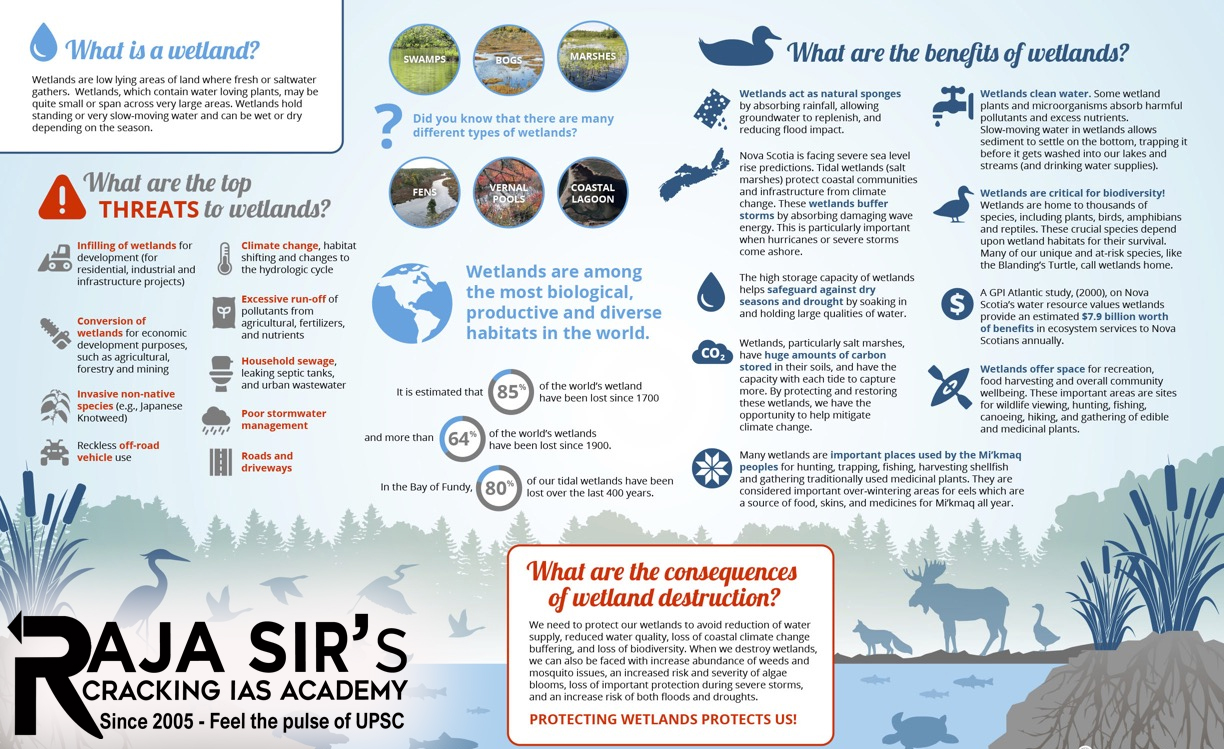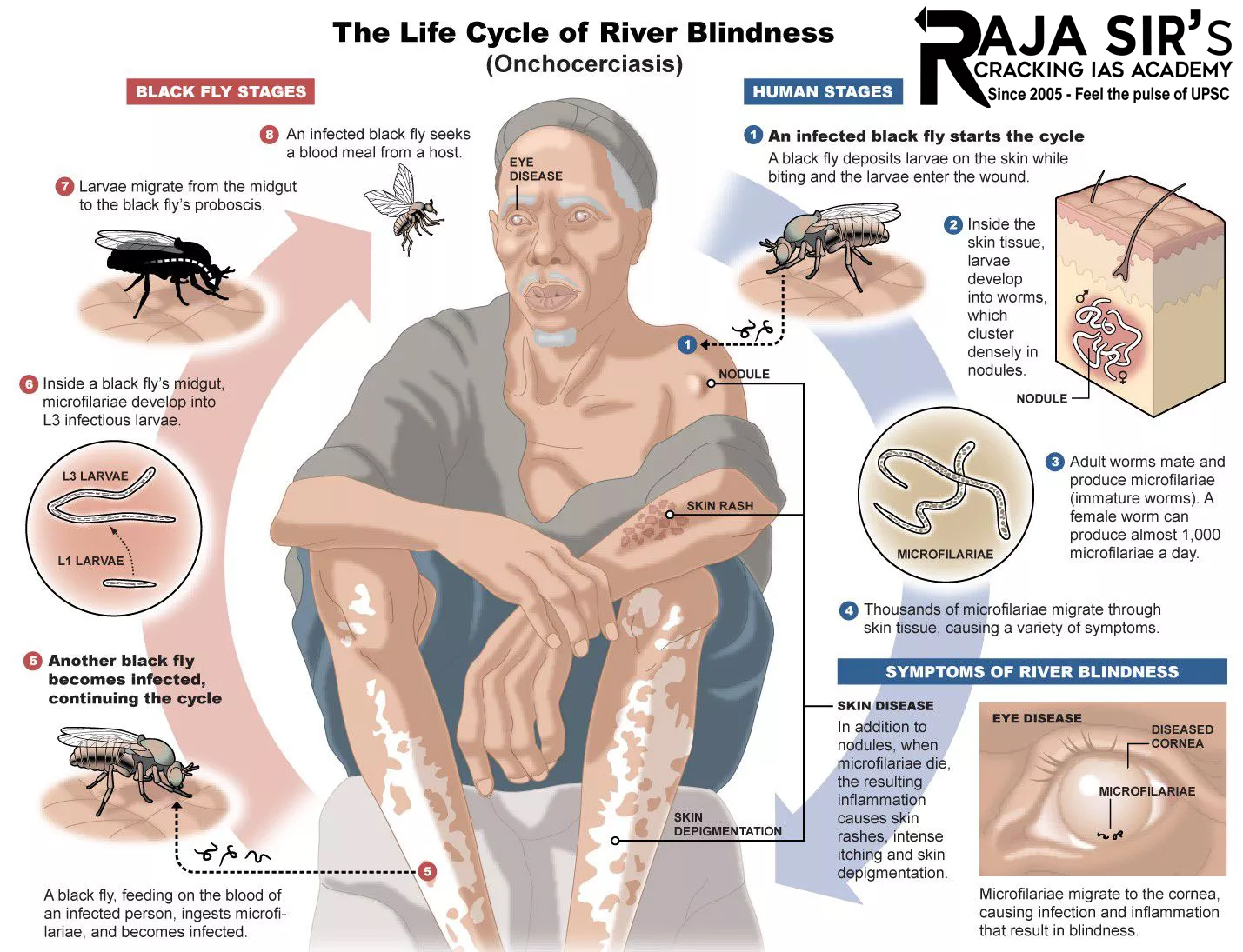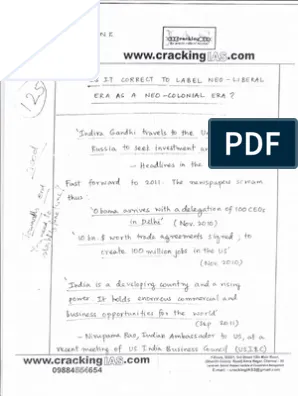|
Bharatiya Bhasha Pustak Scheme
The Union Budget 2025-26 has increased the allocation for school and higher education and has announced Bharatiya Bhasha Pustak Scheme.
The Union Budget 2025-26 has announced Bharatiya Bhasha Pustak Scheme to provide digital-form Indian language books for students.
- It is a new initiative aimed at making learning more accessible by offering digital textbooks and study materials in various Indian languages.
- Under the Bharatiya Bhasha Pustak Scheme, students in schools and universities will be able to access textbooks and learning resources in digital formats.
- The scheme is designed to benefit students from different linguistic backgrounds by providing study materials in regional languages.
- The initiative aims to bridge the gap in educational resources for students from diverse linguistic groups.
- This initiative also complements the government’s previous steps to enhance educational infrastructure, such as the ASMITA (Augmenting Study Materials in Indian Languages through Translation and Academic Writing) initiative.
ASMITA Initiative
- It is an initiative to develop 22,000 books in Indian languages in the next five years.
- It is a collaborative effort of the UGC and the Bharatiya Bhasha Samiti, a high-powered committee under the Ministry of Education.
- The primary objective of this initiative is to promote and integrate Indian languages more deeply into the education system, thereby enriching the learning experience and making it more inclusive.
- This project is seen as part of a broader strategy to enhance the accessibility and quality of educational materials across various Indian languages.
- Thirteen nodal universities have been identified to lead the project, along with member universities from various regions.
- TheUGC has also created a standard operating procedure (SOP) for the book-writing process in each assigned language.
- The SOP includes the identification of nodal officers, authors, allocation of title, subject, and programme, writing and editing, submission of the manuscript, review and plagiarism check, finalisation, designing, proofreading and e-publication.
|
|
Composite Material
The Chairman of the Defence Research and Development Organisation (DRDO) recently announced that the organization is developing Radiation Absorbent Materials (RAM), a specialized composite material, to fulfill the stealth requirements of the 5th-generation Advanced Medium Combat Aircraft (AMCA), which is currently under development.
DRDO Chairman recently said that developments in composite materials will play a key role in indigenous development of the strategically significant fifth-generation aircraft, hypersonic missiles and bulletproof jackets, among other things.
- A composite material is made up of two or more materials with different chemical and physical properties.
- A composite material is used to enhance the properties of its base materials.
- The materials which form the composite are also called constituents or constituent materials.
- The material properties achieved by purposeful material combinations can give composites advantages that cannot be achieved by conventional single engineering materials.
- Composite materials offer a high strength-to-weight ratio, corrosion resistance, durability, design flexibility, thermal and electrical insulation, chemical resistance, and customizable properties, making them ideal for various industries.
- Examples of Composites: Fiberglass, Carbon Fiber Reinforced Polymer (CFRP), Concrete, Plywood, etc.
- They are used in a wide range of applications, from aerospace structures, to boat hulls to sporting goods.
- For example, composite materials enable us to fly further and develop more fuel-efficient automobiles (vehicle weight reduction), harvest energy more efficiently (lighter and larger wind turbine blades), prevent injury (safety equipment like motorcycle helmets), and enjoy recreational activities (sporting equipment).
|
|
India Adopts Debt-GDP Ratio as Key Fiscal Anchor
Debt-GDP Ratio Latest News
- In a significant shift in fiscal policy, the Indian government has announced that it will replace the fiscal deficit target with the debt-to-GDP ratio as the primary fiscal anchor from FY 2026-27.
- This move aims to ensure fiscal sustainability, enhance transparency, and provide greater flexibility in managing public finances.
- The government has set a long-term target of reducing the central government’s debt-GDP ratio to 50±1% by March 31, 2031.
Debt-GDP Ratio: A New Fiscal Approach
- The debt-to-GDP ratio measures the share of a country''s national debt in relation to its Gross Domestic Product (GDP).
- It serves as a reliable indicator of fiscal health, capturing both past and present borrowing trends.
- According to the Union Budget 2025, the central government’s debt-GDP ratio is projected to:
- 57.1% in FY 2024-25 (Revised Estimate)
- 56.1% in FY 2025-26
- Declining towards 50% by FY 2031
- The move aligns with global best practices and ensures a long-term fiscal consolidation strategy rather than focusing solely on annual deficit reduction.
Rationale for the Shift to Debt-GDP Ratio:
- More Reliable Fiscal Performance Measure: It captures the cumulative effects of past fiscal policies, unlike the annual fiscal deficit target, which provides a short-term snapshot.
- Greater Fiscal Transparency: The new approach aims to reduce off-budget borrowings and improve clarity in public debt reporting.
- Operational Flexibility: It allows the government to respond to economic shocks and unforeseen developments more effectively than rigid annual deficit targets.
- Debt Sustainability and Growth: A structured debt-reduction path will create fiscal space for productive investments in infrastructure, social welfare, and economic development.
Fiscal Consolidation Strategies: Mild, Moderate, and High Approaches
- To achieve the debt-GDP reduction target, the government has outlined three scenarios based on different nominal GDP growth rates:
This approach allows flexibility in choosing mild, moderate, or aggressive fiscal consolidation, balancing growth needs with debt sustainability.
Impact on Fiscal Deficit:
- The fiscal deficit target for FY 2024-25 is estimated at 4.8% of GDP, lower than the original target of 4.9%. For FY 2025-26, the government has projected a further reduction to 4.4% of GDP.
- Under a moderate fiscal consolidation strategy, the fiscal deficit is expected to decline:
- 4.4% in FY 2026
- 3.5% in FY 2031
- While this represents a gradual improvement, experts caution that reaching the Fiscal Responsibility and Budget Management (FRBM) Act target of 40% debt-GDP ratio will take longer than expected.
Expert Analysis and Concerns:
- Longer Transition Period: Experts argue that achieving a 40% debt-GDP ratio will require several decades, raising concerns about delayed fiscal commitments.
- Private Sector Borrowing Constraints: With a fiscal deficit of 4.4% and state governments contributing an additional 3.3%, there is limited room for private and non-governmental sector borrowing. This could lead to increased foreign borrowing and higher current account deficits.
- Fiscal Space for Growth: The transition to a debt-based fiscal strategy is expected to free up resources for infrastructure investments, welfare programs, and innovation-driven initiatives.
Conclusion:
- The Union Budget 2025 marks a major shift in India’s fiscal policy, replacing fiscal deficit targets with a more flexible and transparent debt-GDP ratio approach.
- While this strategy provides long-term fiscal stability, its success depends on nominal GDP growth, effective fiscal management, and global economic conditions.
- The challenge remains in achieving sustainable debt reduction while ensuring adequate investment in development and economic expansion.
- India’s ability to strike this balance will define the success of this fiscal transformation.
|
|
Inland mangrove of Guneri Latest News
Recently, the Gujarat government declared the inland mangrove in Kutch district’s Guneri village as the first Biodiversity Heritage Site of Gujarat.
- It is a natural inland mangrove site located in Kutch district of Gujarat.
- It is located at a distance of 45 km from the Arabian Sea and four km from the Kori Creek, where seawater never approaches.
- It is also devoid of any sludge, and is spread over a flat piece of land like a forest.
- It is the last remains of inland mangrove in India.
- This inland mangrove is rare and has been reported from only eight locations across the globe till date.
- They are assumed to have originated either after the marine transgression which occurred in the area during the Miocene period or on the bank of the lost river (the Saraswati River) in the Great Rann of Kachchh.
- Studies elsewhere have reported that the inland mangroves survive in areas having limestone deposition which connects with the sea bed.
- The limestone provides a continuous flow of groundwater to the mangrove ecosystem/vegetation. The Western Kutch and areas surrounding the Guneri mangroves have records of limestone depositions.
- The announcement has been done under the provisions of The Biodiversity Act, 2002. The Act empowers the state government to notify an area as a BHS after consulting concerned local bodies.
|
|
National Bank for Financing Infrastructure and Development
According to NaBFID officials, setting up of a partial credit enhancement facility will bring a fresh pool of finance from pension and insurance funds looking for long-term investment avenues.
The Finance Minister recently said the National Bank for Financing Infrastructure and Development (NaBFID) will set up a partial credit enhancement facility for corporate bonds in the infrastructure sector.
It is a specialized Development Finance Institution in India aimed at supporting the country''s infrastructure sector, which can significantly gain from an enabling credit flow by means of attractive instruments and channelized investment.
- NaBFID was set up in 2021, by an Act of the Parliament (The National Bank for Financing Infrastructure and Development Act, 2021),
- Objectives: Addressing the gaps in long-term non-recourse finance for infrastructure development, strengthening the development of bonds and derivatives markets in India, and sustainably boosting the country’s economy.
- Regulated by: It shall be regulated and supervised by RBI as an All-India Financial Institution (AIFI).
- The principal idea behind the setup of NaBFID is to provide a dedicated and specialized institution focused on addressing the long-term financing needs of the infrastructure sector in India.
What are Development Finance Institutions (DFIs)?
- These are organizations owned by the government or public institutions to provide funds for infrastructure and large-scale projects, where it often becomes unviable for large banks to lend.
- They provide two types of funds- Medium (1-5 years) and Large (< 5 years).
- The prime objective of DFI is the economic development of the country via financing infrastructure activities.
- These institutions provide long-term financial as well as technical support to various sectors.
- DFIs do not accept deposits from people, but they raise funds by borrowing from governments, insurance companies, pension funds, and sovereign funds.
- It also provides a guarantee to banks on behalf of companies and subscriptions to shares, debentures, etc.
- They also provide technical assistance like Project Report, Viability study, and consultancy services.
- DFIs provide credit enhancement for infrastructure and housing projects and also help in improving debt flows towards infrastructure projects.
|
|
National Geospatial Mission
Recently, the Finance Minister announced the launch of a National Geospatial Mission in the Budget 2025-26.
- It will be aimed at modernising land records and enhancing urban planning across India.
- This initiative will leverage the existing PM Gati Shakti framework to develop foundational geospatial infrastructure and data, facilitating improved design and execution of infrastructure projects.
- The initiative also aims to address challenges related to land disputes and inefficient land use, which have long hindered growth in various regions.
- o Geospatial refers to data or information that is associated with a specific location on the Earth’s surface.
- By creating a robust geospatial database, the government aims to streamline processes involved in land reforms, making them more efficient and transparent.
- This move is anticipated to benefit not only government agencies but also private stakeholders, including geospatial and drone companies, which will likely see increased demand for their services.
- Significance: The National Geospatial Mission is expected to significantly impact various sectors, particularly in urban development and land management.
- The focus on geospatial technology is seen as a critical component in achieving the government''s broader goals of improving efficiency and accountability in public services.
|
|
National Manufacturing Mission
Recently, the Union Minister for Finance announced the National Manufacturing Mission while presenting the Union Budget 2025-26 in Parliament.
- It covers small, medium and large industries for furthering “Make in India”.
- It will lay emphasis on five focal areas i.e.
- o Ease and cost of doing business; future ready workforce for in-demand jobs; a vibrant and dynamic MSME sector; availability of technology; and quality products.
- Under this Mission, the government will provide policy assistance, implementation roadmaps, and governance and monitoring structures for central ministries and states.
- It aims to enhance domestic value addition and build a robust ecosystem for solar PV cells, electric vehicle (EV) batteries, motors and controllers, electrolysis, wind turbines, high-voltage transmission equipment, and grid-scale batteries.
- The Mission will also support Clean Tech manufacturing.
- It will support design capacity, component manufacturing, and machinery required for production of non-leather quality footwear, besides the support for leather footwear and products.
- In addition to the mission,the credit guarantee cover is to be enhanced for MSMEs to Rs 10 crore from Rs 5 crore and investment and turnover limit for classification of all MSMEs will be enhanced to 2.5 and 2 times.
|
|
New Ramsar Sites
Recently, four more wetlands from India have got an international tag of Ramsar Convention sites.
Sakkarakottai Bird Sanctuary
- Location: Tamil Nadu
- It is a unique mosaic wetland ecosystem located close to the Gulf of Mannar on the Central Asian flyway, a regular route for the migratory birds that comes from Iran, Afghanistan and Pakistan.
- This wetland acts as a breeding ground for several Resident/Resident-Migrant species of waterfowl.
Therthangal Bird Sanctuary
- Location: Tamil Nadu
- It lies along the Central Asian Flyway and are critical breeding and foraging grounds for waterbirds, including the Spot-billed Pelican, Black-headed Ibis, and Oriental Darter.
- It plays a crucial role in climate regulation, recharging of groundwater, and irrigation.
- The sanctuary is home for many important endemic and near threatened species including the Painted stork, Black-headed ibis, Spot-billed pelican, Oriental darter and Pallied harrier among others
Udhwa Lake
- Location: Jharkhand
- Itis named after saint Uddhava of Mahabharat times, a friend of Lord Krishna.
- It falls within the Gangetic Plains bio-geographic zone.
- The Sanctuary has two water bodies i.e. Patauran (155 ha) and Berhale (410 ha), interconnected by a water channel. Patauran is a comparatively clean water body.
- It is the first Ramsar designated wetland from Jharkhand.
Khecheopalri Lake
- Location: Sikkim
- It is a sacred gem revered by both Buddhists and Hindus.
- It is known as a wish-fulfilling lake, its tranquil waters are believed to be blessed by Guru Padmasambhava and the Goddess Tara.
- It is surrounded by lush forests and the mystical aura of ancient legends, this enchanting lake, part of the revered Demazong valley.

|
|
Onchocerciasis
Recently, the World Health Organization (WHO) congratulates Niger for having met the criteria for onchocerciasis elimination.
- It is commonly known as “river blindness” which is a neglected tropical disease (NTD).
- It is caused by the parasitic worm Onchocerca volvulus.
- Symptoms of Onchocerciasis: Symptoms include severe itching, disfiguring skin conditions, and visual impairment, including permanent blindness.
- Transmission of Onchocerciasis: It is transmitted to humans through the bite of an infected blackfly of the genus Simulium, which breeds in fast-flowing rivers and streams.
- The disease primarily affects rural populations in sub-Saharan Africa, and Yemen, with smaller endemic areas foci found in parts of Latin America.
- Treatment for Onchocerciasis: Population-based treatment with ivermectin (also known as mass drug administration or MDA) is the current core strategy to eliminate onchocerciasis, with a minimum requirement of 80% therapeutic coverage.
- Five countries have been verified by WHO as free of onchocerciasis: Colombia (2013), Ecuador (2014), Mexico (2015) and Guatemala (2016), and one in Africa: Niger (2025).

What are Neglected Tropical Diseases?
- These are a diverse group of tropical infections which are common in low-income populations in developing regions of Africa, Asia, and the Americas.
- They are caused by a variety of pathogens such as viruses, bacteria, protozoa and parasitic worms (helminths).
- There are a diverse group of 20 diseases that are affecting more than 1 billion people who live in impoverished communities.
|
|
Pradhan Mantri Dhan Dhanya Krishi Yojana
The Pradhan Mantri Dhan Dhanya Krishi Yojana is motivated by the Aspirational Districts Programme which was launched in 2018 to “to quickly and effectively transform 112 most under-developed districts across the country.”
The Finance Minister recently announced the Pradhan Mantri Dhan Dhanya Krishi Yojana, or the developing agri-districts programme, in her record 8th Union Budget presentation.
Pradhan Mantri Dhan Dhanya Krishi Yojana
- It is a new initiative aimed at supporting farmers in 100 regions facing challenges in agriculture.
- These areas have low crop yields, and farmers often struggle to access financial assistance.
- The scheme, in collaboration with the state government, aims to cover 100 districts in the country, and around 1.7 crore farmers will benefit from it.
- The scheme aims to generate opportunities in rural areas so that migration is an option and not a necessity.
- The scheme focuses on five key areas including:
- Enhance agricultural productivity
- Improve irrigation facilities
- Improve credit availability
- To adopt crop diversification and sustainable agriculture practices
- To augment post-harvest storage at Panchayat and block levels.
|
|
South Georgia Island
South Georgia Island is a small subantarctic island mainly populated by penguins and seals.
The world''s largest iceberg, A23a, is drifting toward South Georgia Island, a remote and ecologically vital wildlife haven, after having been freed from the Filchner Ice Shelf in Antarctica.
South Georgia Island
- It is a mountainous, barren island in the South Atlantic Ocean.
- It is part of the British overseas territory of South Georgia and the South Sandwich Islands.
- It has an area of 3,756 sq.km.
- Over 160 glaciers and high peaks like Mount Paget (2,935 m / 9,629 ft) dominate the landscape.
- Climate: Sub Antarctic climate with cold, wet, and windy conditions year-round, though it is slightly milder than Antarctica.
- It has no native or permanent human residents, only temporary researchers, government officials, and visitors.
- Biodiversity:
- The island’s bleak Antarctic climate, with perpetual snow covering three-fourths of the island, supports only hardy grasses and other tundra plants.
- It is home to millions of seabirds, including king penguins, albatrosses, and petrels, as well as large populations of seals (fur seals, elephant seals) and whales.

|
|
Union Budget 2025-26: Key Features, Growth Engines, and Reforms
- The Finance Minister presented the Union Budget 2025-26 with the theme “Sabka Vikas” stimulating balanced growth of all regions.
- Article 112 of the Constitution requires the government to present to Parliament a statement of estimated receipts and expenditure in respect of every financial year, from April 1 to March 31.
- This statement is called the annual financial statement.
- It is divided into three parts - Consolidated Fund, Contingency Fund and Public Account.
- For each of these funds, the government has to present a statement of receipts and expenditure.
Key features of the Union Budget 2025-26
- Quoting Telugu poet Shri Gurajada Appa Rao’s famous saying, ‘A country is not just its soil; a country is its people.’ – the FM presented the Union Budget.
- In line with the theme of this year’s budget, the FM outlined the broad Principles of Viksit Bharat.
Six key principles of Viksit Bharat as outlined in the Union Budget 2025-26
- Zero poverty
- Quality education for all
- Affordable, high-quality healthcare
- Skilled workforce with meaningful employment
- 70% women participation in economic activities
- Farmers making India the ‘food basket of the world’
Prioritized Section under the Union Budget 2025-26
- The Budget prioritizes the poor (Garib), youth, farmers (Annadata), and women (Nari).
- It does so while aiming to boost growth, attract private investment, uplift households, and empower the middle class.
Key reform areas as outlined in the Union Budget 2025-26
- Key reform areas include Taxation, Power, Urban Development, Mining, Financial Sector, and Regulations to enhance India''s global competitiveness.
Engines in the journey to Viksit Bharat
- Agriculture, MSMEs, Investment, and Exports are identified as growth engines, with reforms as the driving force and inclusivity as the guiding principle.
Growth engines as highlighted in Union Budget 2025-26
- Agriculture, MSMEs, Investment, and Exports are identified as growth engines in the Union Budget 2025-26.
1st Engine: Agriculture
- Prime Minister Dhan-Dhaanya Krishi Yojana
- Launched in partnership with states, covering 100 districts.
- Aims to increase productivity, promote crop diversification, enhance storage, improve irrigation, and provide credit access.
- Rural Prosperity and Resilience Programme
- Multi-sectoral initiative with states to tackle underemployment in agriculture.
- Focus on skilling, investment, technology, and boosting the rural economy.
- Benefits rural women, young farmers, rural youth, small & marginal farmers, and landless families.
- Mission for Aatmanirbharta in Pulses (6 Years)
- Special focus on Tur, Urad, and Masoor pulses.
- NAFED & NCCF to procure these pulses from farmers for the next 4 years.
- Key Agricultural Initiatives
- Comprehensive Programme for Vegetables & Fruits.
- National Mission on High Yielding Seeds.
- Five-yearMission for Cotton Productivity.
- Increased Loan Limits for Farmers
- Kisan Credit Card loan limit raised from ₹3 lakh to ₹5 lakh under a modified interest subvention scheme.
2nd Engine: MSMEs
- Strengthening MSMEs for Growth
- MSMEs contribute 45% of India''s exports and are key to economic development.
- Investment and turnover limits for MSME classification increased to 2.5 times and 2 times, respectively.
- Enhanced credit availability with expanded guarantee cover announced.
- Support for Women, SC/ST Entrepreneurs
- New scheme for 5 lakh first-time entrepreneurs from women, Scheduled Castes, and Scheduled Tribes.
- Provides term loans up to ₹2 crore over the next 5 years.
- Boosting Manufacturing and ''Made in India''
- Scheme to make India a global hub for toys under the ''Made in India'' initiative.
- Launch of a National Manufacturing Mission to support small, medium, and large industries, reinforcing ''Make in India''.
3rd Engine: Investment
- Investment in People
- 50,000 Atal Tinkering Labs to be set up in government schools over the next 5 years.
- Broadband connectivity for all government secondary schools and primary health centres in rural areas under Bharatnet.
- Bharatiya Bhasha Pustak Scheme to provide digital-form Indian language books for school and higher education.
- Five National Centres of Excellence for Skilling with global partnerships for “Make for India, Make for the World” manufacturing.
- Centre of Excellence in AI for Education with an outlay of ₹500 crore.
- Gig workers to receive identity cards, e-Shram portal registration, and healthcare under PM Jan Arogya Yojana.
- Investment in Economy
- Infrastructure ministries to create a 3-year PPP project pipeline.
- ₹1.5 lakh crore allocated for 50-year interest-free loans to states for capital expenditure and reforms.
- Second Asset Monetization Plan (2025-30) to reinvest ₹10 lakh crore into new projects.
- Jal Jeevan Mission extended till 2028 with focus on quality, operations, and maintenance through Jan Bhagidhari.
- Urban Challenge Fund of ₹1 lakh crore for initiatives like ‘Cities as Growth Hubs’, ‘Creative Redevelopment of Cities’, and ‘Water & Sanitation’.
- Investment in Innovation
- ₹20,000 crore allocated for a private sector-driven Research, Development, and Innovation initiative.
- National Geospatial Mission to develop geospatial infrastructure and data for urban planning.
- Gyan Bharatam Mission for survey, documentation, and conservation of 1 crore+ manuscripts.
- National Digital Repository of Indian Knowledge Systems proposed for knowledge sharing.
4th Engine: Exports
- Export Promotion & Digital Infrastructure
- Export Promotion Mission to help MSMEs tap into global markets, jointly driven by Commerce, MSME, and Finance Ministries.
- ‘BharatTradeNet’ (BTN) proposed as a unified digital public infrastructure for trade documentation and financing solutions.
- Boosting Domestic Manufacturing & Industry 4.0
- Government to develop domestic manufacturing capacities for better integration with global supply chains.
- Support for domestic electronic equipment industry to leverage Industry 4.0 opportunities.
- National Framework proposed for Global Capability Centres (GCCs) in emerging Tier-2 cities.
- Infrastructure & Warehousing Support
- Government to upgrade infrastructure and warehousing for air cargo, with special focus on high-value perishable horticulture produce.
Budget 2025-26: Reforms as the Fuel of growth
- Over the past 10 years, the government has implemented key taxpayer-friendly reforms, including:
- Faceless assessment; Taxpayers'' charter; Faster refunds
- 99% returns on self-assessment
- Vivad se Vishwas scheme for dispute resolution
- Reaffirming commitment to “Trust First, Scrutinize Later”, the Finance Minister emphasized continued tax reforms to enhance convenience for taxpayers.
Financial Sector Reforms and Development as outlined in Union Budget 2025-26
- The Union Budget 2025-26 introduced key reforms to improve compliance, attract investments, and build a strong regulatory environment:
- FDI Limit in Insurance: Raised from 74% to 100% for companies investing the entire premium in India.
- Light-Touch Regulatory Framework: Focus on trust-based governance to boost productivity and employment.
Key Measures for a Modern Regulatory System
- High-Level Committee for Regulatory Reforms
- Review non-financial sector regulations, licenses, and permissions.
- Strengthen trust-based governance and ease of compliance.
- Provide recommendations within one year.
- Investment Friendliness Index of States
- Launched in 2025 to promote competitive cooperative federalism.
- Financial Stability and Development Council (FSDC) Mechanism
- Assess impact of financial regulations.
- Enhance financial sector responsiveness and development.
- Jan Vishwas Bill 2.0
- Decriminalize 100+ provisions in various laws to improve ease of doing business.
Union Budget 2025-26: Fiscal Consolidation
- The Union Budget 2025-26 reaffirms the Government''s commitment to fiscal discipline by ensuring that the fiscal deficit remains on a declining trajectory and Central Government debt stays sustainable.
Fiscal Deficit Targets
- Revised Estimate (RE) 2024-25: 4.8% of GDP
- Budget Estimate (BE) 2025-26: 4.4% of GDP
Revised Estimates (2024-25)
- Total Receipts (excluding borrowings): ₹31.47 lakh crore
- Net Tax Receipts: ₹25.57 lakh crore
- Total Expenditure: ₹47.16 lakh crore
- Capital Expenditure: ₹10.18 lakh crore
Budget Estimates (2025-26)
- Total Receipts (excluding borrowings): ₹34.96 lakh crore
- Net Tax Receipts: ₹28.37 lakh crore
- Total Expenditure: ₹50.65 lakh crore
Other highlights of the Union Budget 2025-26
- Reposing faith on middle class in nation building, the Union Budget 2025-26 proposes new direct tax slabs and rates under the new income tax regime.
- Middle-Class Tax Relief & Personal Income Tax Reforms
- No Income Tax on total income up to ₹12 lakh per annum under the new tax regime.
- Salaried individuals earning up to ₹12.75 lakh per annum will pay NIL tax after a ₹75,000 standard deduction.
- Estimated revenue loss of ₹1 lakh crore due to new tax structure.
- TDS/TCS Rationalization:
- Senior citizens'' tax deduction limit on interest doubled from ₹50,000 to ₹1 lakh.
- TDS threshold on rent raised from ₹2.4 lakh to ₹6 lakh per annum.
- TCS collection threshold increased to ₹10 lakh.
- Delay in TCS payments decriminalized (following TDS decriminalization).
- Compliance Ease & Incentives:
- Updated return filing period extended from 2 years to 4 years.
- Registration period for small charitable trusts increased from 5 to 10 years.
- Annual value of two self-occupied properties can be claimed as NIL without conditions.
- National Savings Scheme withdrawals (post-Aug 29, 2024) & NPS Vatsalya accounts exempted from tax.
- Ease of Doing Business & Investment Promotion
- New Scheme for International Transactions: Arm’s length pricing for a block period of 3 years to ensure tax certainty.
- Presumptive Taxation for Non-Residents: Applicable to those offering services to electronics manufacturing companies in India.
- Tonnage Tax Benefits Extended to inland vessels.
- Startup Incentives: Incorporation period extended by 5 years.
- Infrastructure Investment Boost: Sovereign Wealth and Pension Fund investment deadline extended to March 31, 2030.
- Customs Reforms & Trade Promotion
- Industrial Tariff Rationalization:
- Removal of seven tariffs and introduction of a single cess/surcharge per category.
- Healthcare & Essential Medicines:
- 36 life-saving drugs for cancer, rare, and chronic diseases fully exempted from Basic Customs Duty (BCD).
- 37 more medicines & 13 Patient Assistance Program drugs also exempted.
- Boost for Domestic Manufacturing:
- 25 critical minerals (cobalt powder, lithium-ion battery waste, lead, zinc, etc.) fully exempted from BCD.
- Textile Sector Support:
- Two more shuttle-less looms fully exempted.
- BCD on knitted fabrics increased to 20% or ₹115/kg (whichever is higher).
- Electronics & Make in India:
- BCD on Interactive Flat Panel Displays (IFPDs) raised to 20%.
- BCD on Open Cells reduced to 5%; parts of Open Cells fully exempted.
- Lithium-ion battery manufacturing: 35 capital goods for EVs & 28 for mobile batteries added to exemption list.
- Shipbuilding Industry: BCD exemption on raw materials extended for 10 more years.
- Export Promotion Measures
- Handicrafts exports facilitated with BCD exemptions.
- Leather Industry Support: BCD fully exempted on Wet Blue leather to boost value addition and employment.
- Fisheries Export Support:
- BCD on Frozen Fish Paste reduced from 30% to 5%.
- BCD on Fish Hydrolysate for shrimp/fish feeds reduced from 15% to 5%.
Vision for Viksit Bharat
- Finance Minister Nirmala Sitharaman highlighted Democracy, Demography, and Demand as key pillars of India''s growth.
- The new tax regime aims to boost consumption, savings, and investment by putting more money into the hands of the middle class, strengthening India''s economic trajectory.
|









 Latest News
Latest News



 General Studies
General Studies